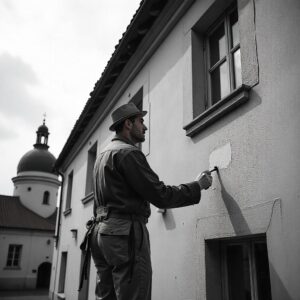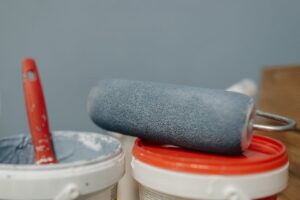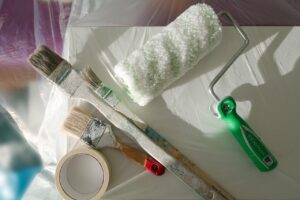1. Skipping Surface Preparation
The problem:
Paint is only as good as the surface it sticks to. Dust, grease, hairline cracks, and flaking old paint compromise adhesion. Painting over these flaws creates an uneven, short-lived finish.
What to do instead:
Before opening a single paint can, ensure surfaces are:
Cleaned with a degreasing solution (like TSP)
Patched with filler for holes and cracks
Sanded smooth and dust-free
Primed, especially over repairs or raw drywall
Prep work adds time but guarantees longevity—and separates a professional job from a rushed one.
2. Using Low-Quality Paint or Tools
The problem:
Cheap brushes shed, low-grade rollers leave lint, and bargain-bin paint lacks coverage and durability. These flaws may not show on day one, but they will appear in weeks or months as streaks, peeling, or uneven tones.
What to do instead:
Invest in:
Quality rollers (appropriate nap length for surface texture)
Professional-grade brushes for cutting-in
Premium paint with high solids and low VOCs
As a seasoned house painter in Edmonton, we always match tools to the job, and the difference shows in the final finish.
3. Painting in the Wrong Conditions
The problem:
Too hot, too cold, too humid—any of these can affect how paint cures. Edmonton’s dry winters and humid summers often lead to rushed jobs that don’t properly adhere or level out.
What to do instead:
Follow the temperature and humidity guidelines on the paint can
Avoid painting near heating vents or direct sunlight
Let each coat dry fully before recoating—even if it feels dry to the touch
Environmental control is a silent killer of good paint jobs. Know your room before you start.
4. Choosing the Wrong Finish for the Space
The problem:
Flat paint in a high-traffic hallway? Gloss in a bedroom? The wrong finish wears poorly and highlights imperfections.
What to do instead:
Match finish to function:
Flat or matte: Great for ceilings and low-touch areas
Eggshell or satin: Best for living rooms, bedrooms, hallways
Semi-gloss or gloss: Ideal for trim, doors, and bathrooms
Every professional house painter in Edmonton knows: the right sheen is just as important as the right color.
5. Rushing the Process
The problem:
This is the one mistake that encompasses all the others. Whether it’s skipping primer, applying coats too fast, or painting late into the night—rushed painting leads to failure.
What to do instead:
Allocate proper time for prep, priming, drying, and cleanup
Don’t paint a wall just because you have leftover paint
Be methodical—cut in edges first, then roll in sections
Painting is part art, part science—and it doesn’t reward shortcuts.





